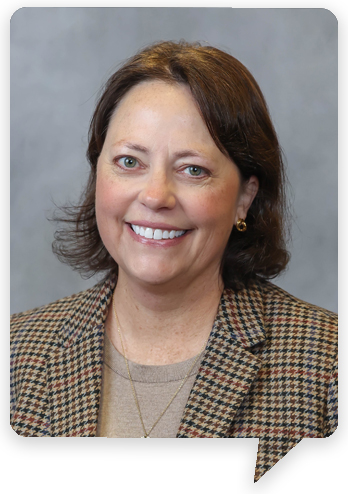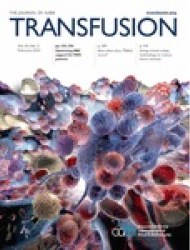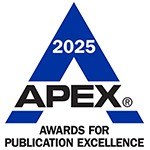“In transfusion medicine, showcasing the life-saving impact of blood banking and transfusion support can be especially powerful.”

It’s no surprise that generational differences can impact workforce dynamics in the clinical laboratory setting. Each generation has its own workplace values and communication style. For example, baby boomers often prefer one-on-one interactions while younger generations value digital tools to engage with the community and their colleagues.
During her upcoming session at the 2025 AABB Annual Meeting, Tara C. Moon, PhD, MLS(ASCP)CM, the director and a professor in the division of clinical laboratory science at the UNC Chapel Hill School of Medicine, will discuss navigating today’s culture to build a sustainable laboratory workforce and explore ways to tailor engagement and communication strategies to meet the expectations of each generation. Moon is passionate about preparing future laboratory professionals and advancing the field through teaching.
Moon chatted with AABB News about her “Generations Apart and Together” session, common misconceptions about older and younger generations and the ongoing challenges facing the clinical laboratory profession.
The inspiration came from observing real challenges in clinical laboratory environments where multiple generations work side by side. Differences in communication styles, work expectations and values can lead to misunderstandings. As a program director and educator, I’ve seen how these dynamics affect recruitment, retention and team cohesion. I wanted to explore how we can better understand and leverage these differences to build a more sustainable workforce.
Younger professionals, especially Gen Z, tend to prioritize flexibility, purpose-driven work and mental well-being. They value feedback and growth opportunities but may struggle with traditional workplace norms. Older generations often emphasize stability, hierarchy and face-to-face communication. These differences can affect everything from shift scheduling to how feedback is given and received.
They can create friction if not addressed intentionally. For example, Gen Z may prefer digital communication while older staff rely on verbal updates. Misalignment in expectations can lead to disengagement or turnover. However, when laboratory leaders foster inclusive communication and mentorship, these differences can become strengths that enhance collaboration.
During high-pressure situations like massive transfusion protocols, clear and timely communication is critical. Generational differences in preferred communication methods (e.g., verbal updates vs. messaging platforms) can lead to delays or misunderstandings if not proactively addressed.
One misconception is that younger workers lack commitment or resilience. In reality, they often bring efficiency, tech-savviness and a strong desire to contribute meaningfully. Conversely, older workers may be seen as resistant to change, but they offer deep expertise and institutional knowledge. Stereotyping either group undermines team potential.
Partnering with STEM clubs, guidance counselors and early college programs has been effective. We’ve also used current students and alumni as ambassadors to share real-world laboratory experiences. Tailoring messaging to show how laboratory professionals impact patient care helps students see the relevance and importance of the field.
In transfusion medicine, showcasing the life-saving impact of blood banking and transfusion support can be especially powerful. For example, inviting students to observe crossmatching procedures or learn about emergency release protocols helps them see the direct connection between clinical laboratory work and patient care.
Collaboration is key. Educators can integrate laboratory science into biology or health science curricula, while clinical laboratory leaders can offer shadowing opportunities, guest lectures or career panels. Visibility and storytelling (e.g., through platforms Gen Z uses) can make a big difference.
Mentorship bridges generational gaps. It helps younger professionals feel supported and valued, while giving seasoned staff a chance to share knowledge and stay engaged. Structured mentorship programs also improve onboarding and long-term retention.
Mentorship in transfusion services can include pairing newer staff with experienced technologists during complex antibody workups or trauma cases. This not only builds technical skills, but also fosters trust and confidence across generations.
Workplace culture, opportunities for growth and work-life balance are consistently cited. Gen Z, in particular, values purpose and mental well-being. When laboratories offer flexibility, recognition and career development, graduates are more likely to stay.
One laboratory implemented flexible scheduling, cross-training and regular team-building activities. They also created a recognition program that allowed staff to nominate their peers for contributions. These efforts improved morale and reduced turnover across all age groups.
Managers can highlight the impact of the work in the transfusion service on patient outcomes, involve staff in decision-making and support wellness initiatives. Creating space for dialogue and feedback helps newer generations feel heard and connected to the lab’s mission.
Lab managers in transfusion services can reinforce purpose by sharing stories of patients whose lives were saved through timely and accurate blood product support. Connecting daily tasks to real outcomes helps newer generations feel their work truly matters.
Start by assessing team needs through surveys or informal check-ins. Offer flexible scheduling where possible, recognize contributions regularly, and ensure onboarding includes mentorship. Partner with local schools to raise awareness and build a pipeline of future professionals.
I’m encouraged by the growing awareness of workforce challenges and the willingness of educators and laboratory leaders to innovate. Gen Z brings fresh perspectives and a desire for meaningful work. If we continue to adapt and invest in people, we can build a resilient and inclusive future for the profession.
PREVIOUS STORY
Trust: The Hidden Variable in Team PerformanceBACK TO ISSUE
October 2025
Transfusion is AABB’s scholarly, peer-reviewed monthly journal, publishing the latest on technological advances, clinical research and controversial issues related to transfusion medicine, blood banking, biotherapies and tissue transplantation. Access of Transfusion is free to all AABB members.
Learn More About Transfusion Journal
Keep abreast of what's happening in the field of biotherapies with CellSource - AABB's monthly update on the latest biotherapies news.
To submit news about the blood and biotherapies field to AABB, please email news@aabb.org.
President
Meghan Delaney, DO, MPH
Chief Executive Officer
Debra Ben Avram, FASAE, CAE
Chief Communications and Engagement Officer
Julia Zimmerman
Director of Marketing and Communications
Jay Lewis, MPH
Managing Editor
Kendra Y. Mims, MFA
Senior Communications Manager
Drew Case
AABB News
(ISSN 1523939X) is published monthly, except for the combined November/December issue for the members of AABB; 4550 Montgomery Avenue; Suite 700 North Tower; Bethesda, MD 20814.
AABB is an international, not-for-profit association representing individuals and institutions involved in transfusion medicine, cellular therapies and patient blood management. The association is committed to improving health by developing and delivering standards, accreditation and educational programs that focus on optimizing patient and donor care and safety.
+1.301.907.6977
Email: news@aabb.org
Website: www.aabb.org
Copyright 2025 by AABB.
Views and opinions expressed in AABB News are not necessarily endorsed by AABB unless expressly stated.
Notice to Copiers: Reproduction in whole or part is strictly prohibited unless written permission has been granted by the publisher. AABB members need not obtain prior permission if proper credit is given.
